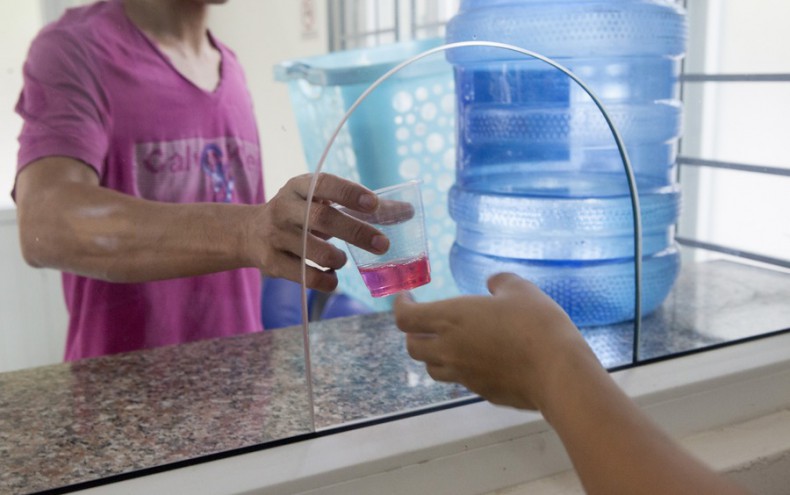Smarter investment proposed for “Ending AIDS” in Viet Nam
Smarter investment proposed for “Ending AIDS” in Viet Nam
A strategy aiming at achieving smarter HIV investment and more sustainable financing of the response to HIV in Viet Nam for the period 2015 – 2020, with a vision to 2030, was shared by the Viet Nam Administration for AIDS Control (VAAC) in late August, with support from UNAIDS.
End AIDS by 2030
Inspired by the global vision, Viet Nam is poised to end AIDS by 2030. A bold step in working toward this goal is the country’s adoption of the new global targets of 90-90-90 – meaning that by 2020, 90% of all people living with HIV (PLHIV) in Viet Nam will know their HIV status, 90% of all people diagnosed with HIV infection will receive antiretroviral treatment (ART), and 90% of those on ART will have durable viral suppression.
However, maintaining and further scaling-up of HIV services is still a formidable challenge in Viet Nam. External funding, which accounts for 75% of the total AIDS spending in Viet Nam, is fast shrinking, while domestic funding has not increased to fill the gap.
It has become clearer than ever that the national response to HIV must be more effective, more efficient, and sustainable over the long term. In a bid to make this happen, the VAAC decided to use the investment approach, conceived by UNAIDS and other global HIV stakeholders, to develop an investment strategy for the national response to HIV.
The strategy provides a clear answer on the needed scales of high- impact HIV interventions in order to achieve less than 1,000 new HIV infections a year by 2030 – effectively “Ending AIDS” in Viet Nam – as well as providing clarity around the associated level of required investment.
Invest now to save more lives
“The key to Viet Nam’s success in responding to HIV is the averting of new HIV infections and AIDS-related deaths,” said Dr. Kristan Schoultz, UNAIDS Viet Nam Country Director.
“The investment strategy clearly shows that investing appropriately now in the response to HIV – which means scaling up what we know works, and focusing our efforts where they will have the greatest impact — will save more lives and more money for Viet Nam over the long term,” Dr. Schoultz added.
According to the analysis undertaken for the strategy, if Viet Nam invests an average of USD 92 million a year, new HIV infections could be reduced to under 1,000 per year by 2030, and the country will save more than 8 billion US dollars during the period of 2015-2030. HIV will no longer be a major public health threat for Vietnamese people by then.
Invest wisely to maximize impact on the HIV epidemic
The HIV investment strategy also puts forward priority actions for Viet Nam to achieve the greatest impact on the response to HIV among key populations at higher risk of HIV infection, and to generate greater efficiency in service provision.
These priorities cover programmatic issues such as bringing to scale evidence-based and comprehensive harm reduction for key populations ; scale-up of HIV testing and treatment, including test-and-treat for key populations; focus on key populations in high-burden areas; sufficient supply of antiretroviral drugs and methadone, and health system strengthening issues such as integration and decentralization of HIV service delivery.
Support for implementation
The investment strategy was developed with the active support of UN organizations and other stakeholders, under the leadership of the VAAC and the coordination support of UNAIDS. The policy recommendations of the strategy have been disseminated to members of the National Assembly and representatives of the central Government and provincial leaders. However, the strategy dissemination workshops suggested that even more advocacy and technical assistance are needed to put the strategy into motion.
“The HIV investment strategy is a good tool but positive changes will only happen if Viet Nam uses this tool to make bold decisions to increase effectiveness, efficiencies and the overall sustainability of the national response,” Dr. Schoultz affirmed “UN organization,s including UNAIDS, will continue to support this decision-making process as needed”.



